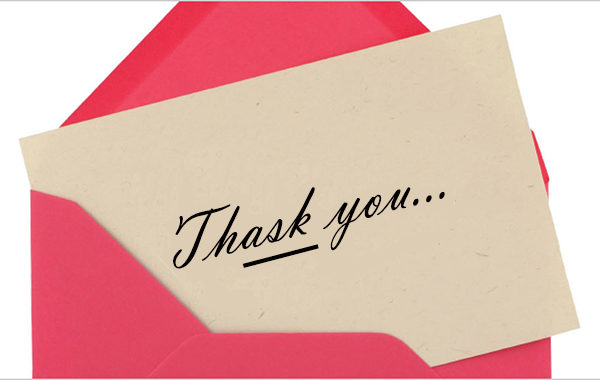I was in an email conversation recently about “the dreaded Thask – when an organization asks for a donation in their receipt.” In other words, including another Ask in your receipt when you are Thanking your donor for a gift.
The conversation was with a bunch of professional fundraisers.
Everyone was against it – except me.
But I Should Be Specific…
I do not advocate for asking for a donation in a gift receipt.
But I do advocate for including a reply card and reply envelope in mailed receipt letters.
That may seem like splitting hairs. Let me tell you why it’s not…
I know from testing that including a reply card and reply envelope with most receipt letters – when done in a certain way – is good for your organization in the short term and in the long term.
Below is the email that I sent to the group. You’ll see how to do it in a way that raises more money (and keeps more donors) for your organization.
Hi There,
Here’s we learned through testing over the years…
In a nutshell, “thasking” is a bad idea, but “thanking and providing an opportunity” is a really good idea. (Apologies for the ungainly name, I just made it up.)
In our experience, when “thanking and providing an opportunity” is done well, two good things happen:
- More gifts come in. In other words, response rates to Thank You / Receipt packages increase.
- Donor retention goes up. When we tracked the donors over time, their giving and loyalty went up compared to donors who received the standard treatment. These were direct, A/B split tests done with tens of thousands of donors.
In my experience, there are a couple details to get right:
- The receipt letter itself needs to be only about Thanking. Zero mention of any future giving. (And be donor-centric, be full of gratitude, tell her what her gift is doing, not what the organization is doing with her gift, etc.)
- The letter needs to be specific as to what the donor’s gift was about. In other words, if the donor gave to ‘provide a night of safety for a homeless mom and her kid’ the letter needs to tell the donor that her gift is providing a night of safety for a homeless mom and her kid. It doesn’t work as well when the letter is a general thank you letter: “Thank you for partnering with us as we help families experiencing homelessness…”
- The reply card does not ask the donor for a gift. It just says something like “my next gift” or “I’d like to do even more.” That positioning is really important. Because as humans we KNOW it’s impolite to ask for another gift at that moment. However, we also know that many donors are thrilled to be well-thanked (or even thanked at all). And that some of them would love to give another gift right then and there. The “I’d like to do even more” positioning avoids the impoliteness.
When an organization really has its act together on this stuff (again, in my experience), they usually see about 1% response rates to Thank You’s / Receipt Letters. Those gifts can generate up to 5% of an org’s total direct mail revenue. And again: no long-term negatives to file health.
Are there exceptions? Sure. I don’t do it to major donors. I wouldn’t do it in Thank You cards. Wouldn’t do it after a donor took a survey. But the majority of the time an organization receives a gift and sends a printed receipt, it’s the smart thing to do.
To summarize, I agree that “thasking” is a bad idea. But I think that making it really easy for a donor to make another gift if they would like to, in a polite way, is the right thing to do most of the time. And when it’s done right, I’ve seen no measurable long-term negatives.
I hope that helps takes any fear out of including a reply device in your standard receipt letter package.
And that it helps you increase your revenue and your donor retention!

